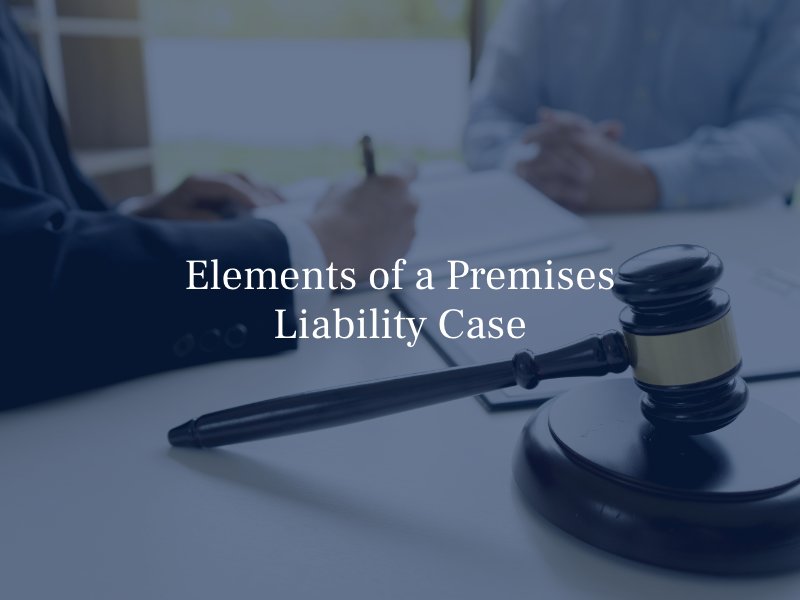Elements of a Premises Liability Case
January 24, 2024 Posted In Premises Liability
Premises liability cases arise when individuals suffer injuries due to unsafe conditions on another person’s property. To establish a strong case and hold a party liable, the following key elements must be proven.

Duty of Care
The foundation of a premises liability case lies in establishing the property owner’s duty of care. Property owners are generally obligated to maintain a safe environment for visitors. The level of care varies based on the visitor’s legal status, which are as follows:
- Invitees are individuals invited onto the property for the owner’s benefit, such as customers in a store, and they are owed the highest duty of care.
- Licensees have the owner’s permission to enter but do so for their own purposes, like social guests, and they are owed a reasonable duty of care.
- Trespassers are those who enter without permission, and generally receive the least duty of care.
The legal status of the visitor establishes the baseline for the property owner’s responsibilities and significantly influences the outcome of a premises liability case.
Breach of Duty
Plaintiffs (injury victims) must demonstrate that the property owner breached their duty of care. This breach may manifest in various ways, such as inadequate maintenance, insufficient warnings, or neglecting to address known hazards. To establish a strong premises liability case, plaintiffs must demonstrate that the property owner’s actions or inactions deviated from the expected standard of care—whether it involves a slippery floor in a store, unmarked construction zones, or other unsafe conditions.
Causation
There must be a direct link between the property owner’s breach of duty and the injuries sustained by the plaintiff. To successfully establish causation, plaintiffs must demonstrate that the hazardous condition or negligent actions of the property owner were a substantial factor in causing the harm. This involves showing that, but for the property owner’s negligence, the injury would not have occurred.
Foreseeability
Foreseeability is a crucial element in establishing negligence. Property owners are expected to anticipate foreseeable risks. Plaintiffs must show that the property owner knew or should have known about the hazardous condition.
Damages
Plaintiffs must also demonstrate actual damages resulting from the injuries. Damages encompass the measurable losses and harm suffered by the injured party due to unsafe conditions on a property. These losses may include medical expenses, rehabilitation costs, lost wages, and property damage directly resulting from the injury. Additionally, damages extend to non-economic losses such as pain and suffering, emotional distress, and a diminished quality of life. To prevail in a premises liability case, plaintiffs must establish and quantify these damages, providing evidence of the financial, physical, and emotional toll caused by the unsafe conditions on the property. Damages play a central role in determining the compensation the injured party may be entitled to receive, aiming to restore them, as much as possible, to their pre-injury state.
Speak To a Trusted Riverside Premises Liability Attorney
Consulting an experienced Riverside Premises Liability Lawyer can provide valuable insights into the strength of your case and the steps needed to prove each required element. They will help you gather the evidence needed to hold the responsible party accountable and ensure you recover maximum compensation.